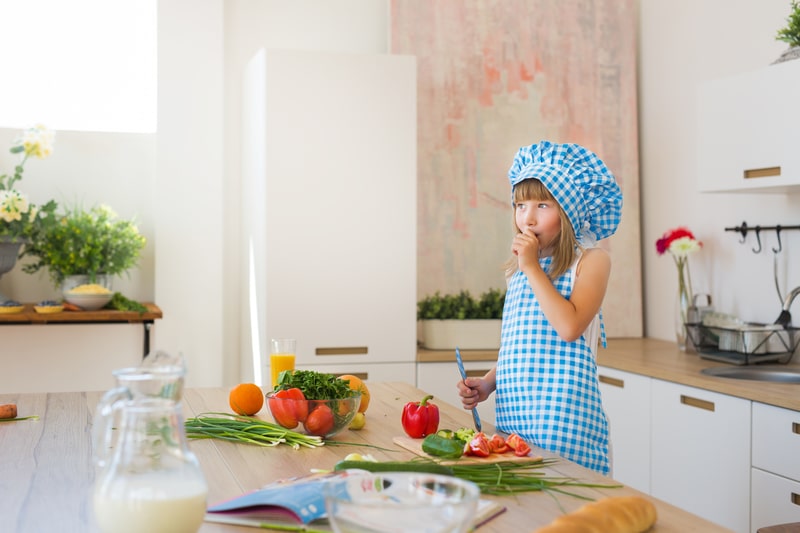
In the first part of our Non-Toxic Kitchen series, we covered the basics of non-toxic cookware and utensils. Now we’re going to talk about considerations for choosing safer produce, food preparation & food storage.
A Non-Toxic Kitchen in 3 Simple Steps
1. Shop for safer produce
Everyone knows fruits and veggies are the stars of the healthy diet show. But with organic, non-GMO, natural, pre-washed, triple-washed and wash-before-use, it’s a headache to figure out where to invest vs where to save your money. We could do a whole post (and will!) on confusing labeling and how to know what to buy, but a great place to start is sticking with organic when you’re buying any of “The Dirty Dozen,” the twelve produce items that rate the worst for pesticides and should be purchased organic, and “The Clean Fifteen,” which are items you can buy conventional and save some cash. Sign up at the EWG website, and they’ll send you two handy-dandy PDFs of the Dirty Dozen and the Clean Fifteen right to your inbox.
2. Prep smart
No pesticides means your produce may bring some hitchhikers into your kitchen, but that doesn’t mean you need to spring for a fancy produce wash. Our Force of Nature cleaner makes a great wash for produce: just spray, wait 30 seconds and give it a quick rinse with cool water so it doesn’t change the taste.
You might be surprised to learn that your trashcan and cutting boards aren’t the standout germiest places in your kitchen, dethroned by some surprise winners like your can opener and fridge drawers. Wash your hands often while cooking and make sure you’re giving all your “high touch” kitchen surfaces (like counters, appliance door handles and drawer pulls) a spray down with a non-toxic cleaner like Force of Nature. It doesn’t have any harmful chemicals or residues so there’s no need to even rinse.
Don’t forget about your sink, which may be dirtier than your toilet seat. At the risk that you might stop reading here, we feel you should know that a microbiologist studying contamination in various areas of the home concluded that it’s safer to make a salad on a toilet seat than on a cutting board. Noooooooooo!!!! Clean your sink after every meal, and pay special attention to your kitchen sponge. That monster gets nasty if you think about the food remnants just festering in that moisture (you know how bad sponges can smell? That’s a cry for help). The good news is you can keep your non-toxic kitchen safe without hazmat chemicals. Just spray your sponges with a non-toxic cleaner like Force of Nature after each use, periodically run through them through the dishwasher and replace them often.
3. Snag safer storage
You can probably read our minds and know we’re going to ask you to ditch your plastic food storage containers and baggies, because of the harmful chemicals that can be leached into food by plastic, particularly if it’s being heated. Glass containers are safer and can be used for both heating and freezing. For wrapping sandwiches and leftovers, check out these amazing, reusable and nontoxic food storage wraps. And because we know parenting is always a balancing act between the ideal & the practical, if you must use plastic bags, try to use them more than once. Just spray & wipe with a non-toxic cleaner like Force of Nature. Just promise us you will never heat them in the microwave!
And, finally, fridge organization is not just for aesthetics, where you store your food in your fridge makes a difference both for safety and for keeping food at it’s optimal flavor and freshness. You may know that dairy is best kept on the lower shelves and that the door is the warmest place in the fridge and best reserved for condiments – but did you know that fragile berries should be stored at the top of the fridge and not in the produce drawer, to remind you to eat them before they break down? Or that leaving space around your food can cut your energy bill? Check out these and other great tips, with a handy pinnable chart, over here on The Greatist’s Fridge Guide.
We’ll be back with part three of our series on the non-toxic kitchen. In the meantime, don’t forget to check out our non-toxic cleaner that cleans as effectively as bleach. From cutting boards to countertops, sinks and stainless steel appliances, our nontoxic cleaning system will be your best friend in one of the hardest working rooms in your home.



